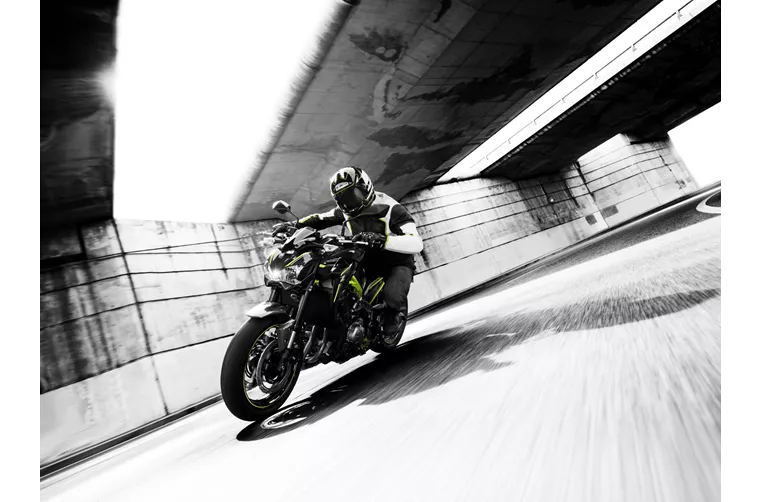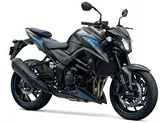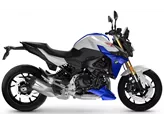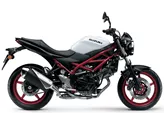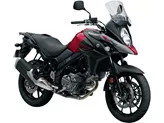Suzuki SV 650 2016 vs. Kawasaki Z900 2018

Suzuki SV 650 2016

Kawasaki Z900 2018
Overview - Suzuki SV 650 2016 vs Kawasaki Z900 2018
The Suzuki SV 650 2016 and the Kawasaki Z900 2018 are both popular naked bikes that offer an exhilarating riding experience. While they share some similarities in terms of engine type, fuel system, and suspension, there are also notable differences between the two models.
Starting with the engine and drive train, the Suzuki SV 650 2016 is equipped with a V2 engine that produces 76 horsepower and 64 Nm of torque. On the other hand, the Kawasaki Z900 2018 features an inline 4-cylinder engine that delivers a higher power output of 125.4 horsepower and 98.6 Nm of torque. This makes the Z900 more powerful and provides a smoother ride.
In terms of cooling, both bikes have liquid-cooled engines, ensuring optimal performance and preventing overheating. They also have fuel injection systems, which improve fuel efficiency and throttle response.
When it comes to suspension, the Suzuki SV 650 2016 is equipped with a telescopic fork front suspension and a swing arm with a monoshock rear suspension. Similarly, the Kawasaki Z900 2018 also features a swing arm with a monoshock rear suspension. However, the Z900 has an upside-down telescopic fork front suspension, which provides better stability and control during aggressive riding.
Both bikes have steel frames, but the Kawasaki Z900 2018 has a double cradle frame, which enhances its overall rigidity and improves handling. The Suzuki SV 650 2016, on the other hand, has a tubular steel frame.

Suzuki SV 650 2016
In terms of braking, both bikes have double disc brakes at the front, but the Kawasaki Z900 2018 has larger diameter discs (300mm) and four-piston calipers, providing better stopping power and control. The Suzuki SV 650 2016, on the other hand, has double piston calipers and 290mm diameter discs.
Both bikes come with advanced rider assistance systems such as ABS, which enhance safety and control while braking. This is particularly important for aggressive riding or emergency situations.
In terms of dimensions and weights, the Suzuki SV 650 2016 has a front tire width of 120mm and a rear tire width of 160mm. The Kawasaki Z900 2018, on the other hand, has a wider rear tire width of 180mm, providing better traction and stability. Both bikes have 17-inch front and rear tire diameters.
The wheelbase of the Suzuki SV 650 2016 is 1445mm, while the Kawasaki Z900 2018 has a slightly longer wheelbase of 1450mm. This difference may have a slight impact on stability and maneuverability.
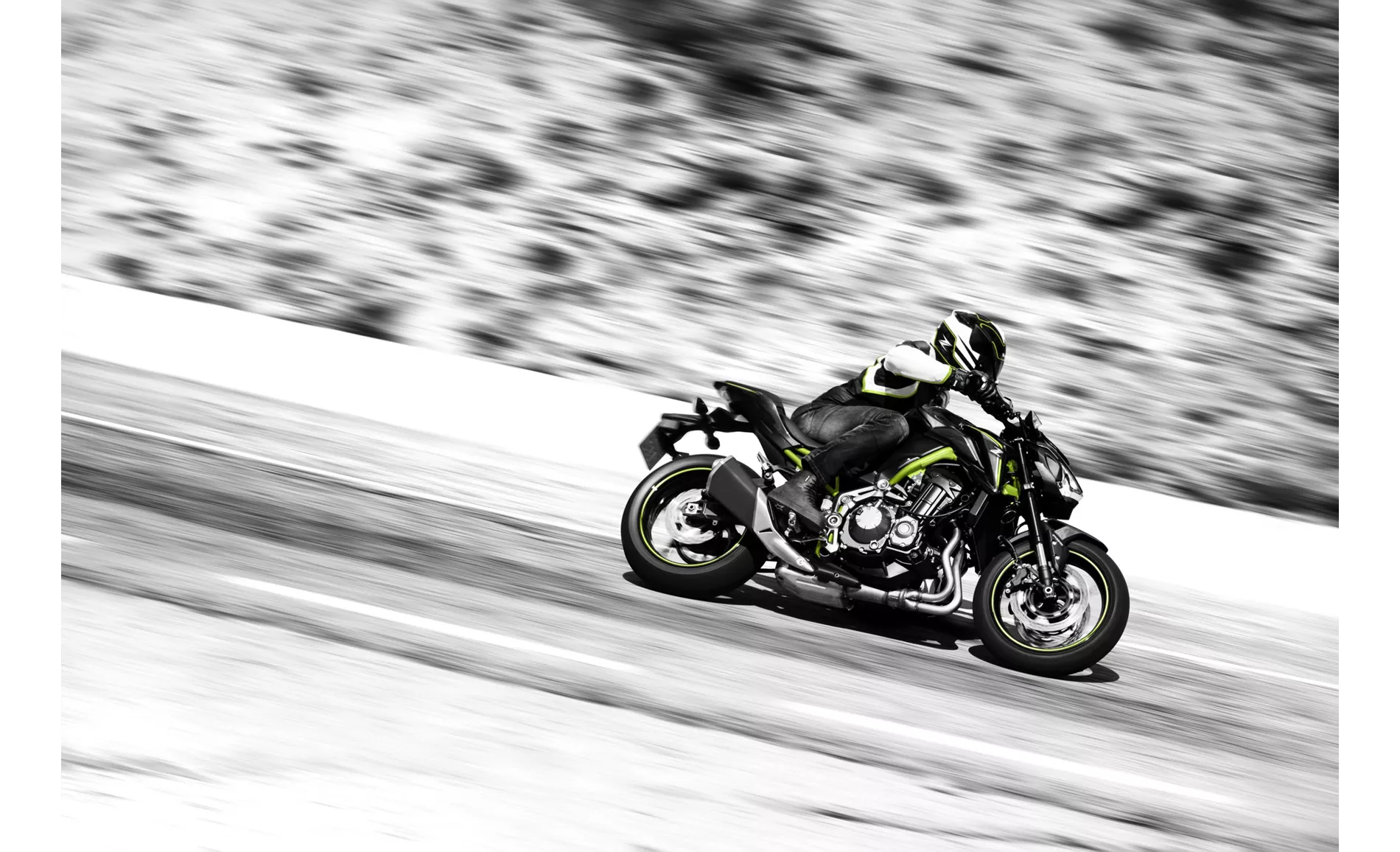
Kawasaki Z900 2018
The seat height of the Suzuki SV 650 2016 is 785mm, while the Kawasaki Z900 2018 has a slightly higher seat height of 795mm. This may affect the comfort and ergonomics for riders of different heights.
In terms of weight, the Suzuki SV 650 2016 has a kerb weight of 197kg with ABS, while the Kawasaki Z900 2018 is slightly heavier with a kerb weight of 210kg with ABS. This may have a slight impact on the bike's agility and handling.
In terms of strengths, the Suzuki SV 650 2016 is praised for its agile and powerful engine, typical V2 sound, comfortable seating position, easy handling, and brakes with good control. The Kawasaki Z900 2018, on the other hand, is appreciated for its powerful and silky engine, great sound, sharp and sporty look, low seating position, and easy handling and maneuverability.
As for weaknesses, the Suzuki SV 650 2016 has a poorly readable digital tachometer, which may be a minor inconvenience for some riders. The Kawasaki Z900 2018, on the other hand, lacks traction control and has a knee angle that may become strenuous for tall riders during long rides.
In conclusion, both the Suzuki SV 650 2016 and the Kawasaki Z900 2018 are impressive naked bikes with their own unique strengths and weaknesses. The choice between the two ultimately depends on the rider's preferences and priorities, whether it be power, handling, comfort, or aesthetics.
Technical Specifications Suzuki SV 650 2016 compared to Kawasaki Z900 2018
Pros and Cons in comparison
Pros and Cons in comparison
Suzuki SV 650 2016

The new SV650 continues the visual minimalism of the first two SV650 generations, but builds technically on its direct predecessor, the SFV650 Gladius - two excellent moves that turn the very modern SV650 into a classic. The design fits wonderfully into the era of many retro conversions, but inside there are also modern gimmicks that make it easier for beginners in particular to get started. The engine, on the other hand, can also convince advanced riders; the typical V2 feeling is wonderful. You shouldn't expect extreme sportiness in the chassis and brakes, but the price of just under 6400 euros (in Germany) is a statement that the competition will have to swallow.
Kawasaki Z900 2018
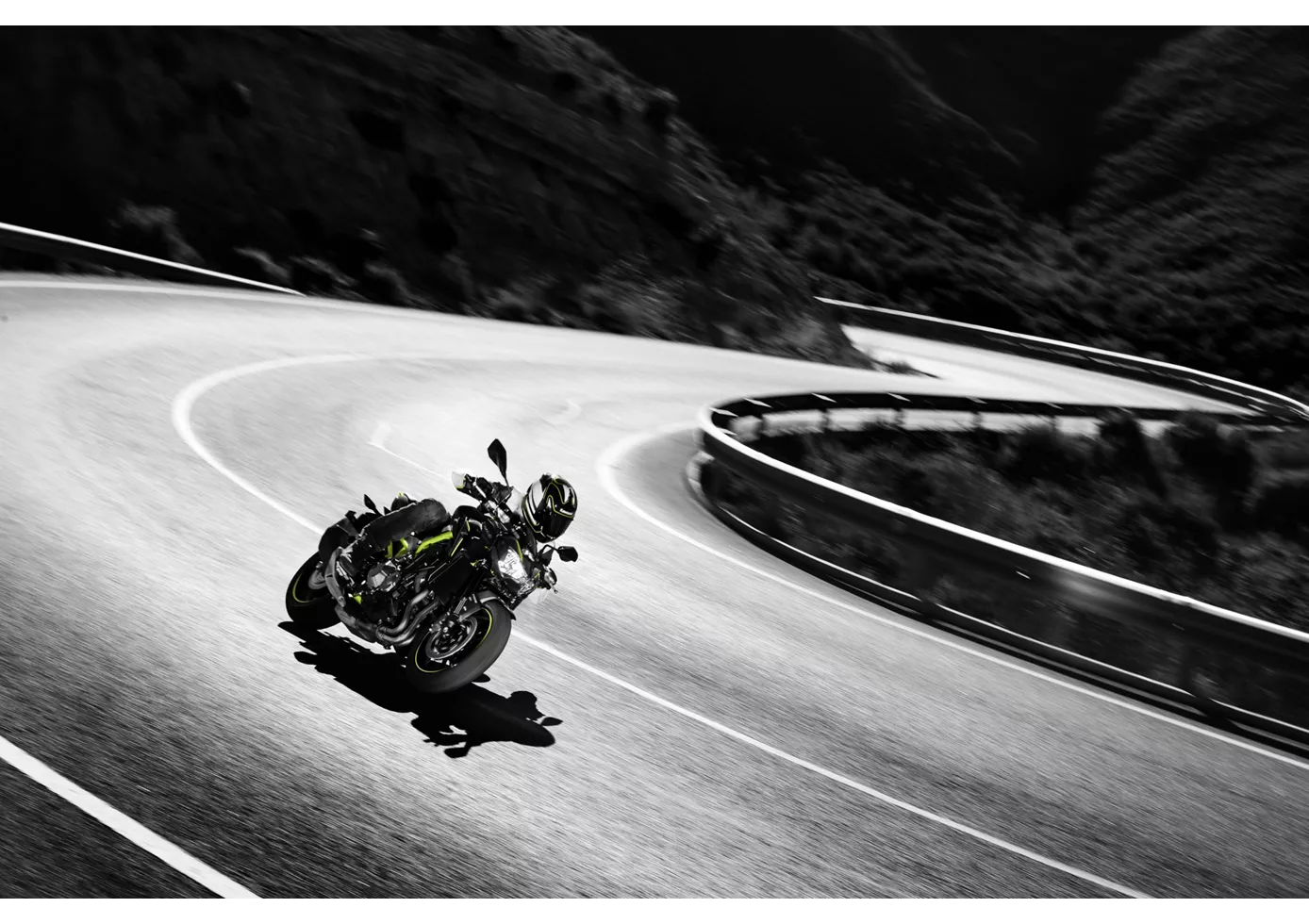
In the hotly contested naked bike segment, the Z900 plays right at the front. Above all, its engine is absolutely terrific, runs incredibly silky and offers rich power in all rev regions - as befits a Japanese four-cylinder. Its sporty, aggressive appearance matches this. It does without electronic bells and whistles, but still conveys a lot of confidence when chasing corners, braking and accelerating out of them. The low seat is especially beneficial for smaller riders, but taller riders might miss a flatter knee angle on long distances. The low weight and compactness make the Z900 particularly agile and easy to handle. A sporting cannon that is also extremely appealing in terms of price
Price Comparison Avarage Market Price Suzuki SV 650 vs Kawasaki Z900
There are a few key differences between a Suzuki SV 650 2016 and a Kawasaki Z900 2018. In terms of price, the actual average price of a Kawasaki Z900 2018 is about 64% higher. A Suzuki SV 650 2016 experiences a loss of 140 USD in one year and 140 USD in two years of ownership. This is offset by a loss of 640 USD and 520 USD for a Kawasaki Z900 2018. Compared to Kawasaki Z900 2018 there are less Suzuki SV 650 2016 bikes available on the 1000PS.de Marketplace, specifically 11 compared to 55. It takes less time to sell a Suzuki SV 650 with 80 days compared to 112 days for a Kawasaki Z900. Since model year 2005 1000PS.de editors have written 25 reviews for the Suzuki SV 650 and 46 reviews for the Kawasaki Z900 since model year 2017. The first review for the Suzuki SV 650 was published on 9/26/2008 and now has more than 14,200 views. This compares to more than 93,200 views for the first review on Kawasaki Z900 published on 11/11/2016.

